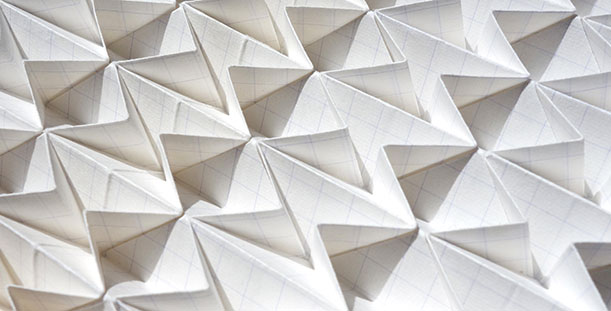BOOMbox at Home: Geometry and Origami Activities
August 26, 2020

Because of the perishable nature of paper, we don't know exactly where origami was invented. However, paper-folding traditions developed after paper was invented in China around the year 105 CE. The most well-known tradition is the Japanese art of origami.
Learn more about the detailed history of origami. Making origami is a great way to practice fine motor skills, develop spatial awareness, and learn about geometry.
Getting Started
To make origami, all you need is paper. Although you can buy colored origami paper, you can resize any kind of paper into the perfect square required for most patterns. You can use papers you decorate yourself or recycle newspapers or magazines. Square sticky notes are also a convenient and fun way to make mini origami.
Origami for Kids has some fun starter patterns, such as paper hats, boats, and fortune-tellers. These patterns will help you get the hang of the different folding techniques. Mastering a new origami pattern can be frustrating, but it can be a great collaborative problem-solving activity.
Origami can be beautiful pieces of art on its own, but you can also incorporate it into games and activities. You could decorate paper houses and design your own city. Paper stars, which are made out of strips of paper, are also a fun place to hide secret messages. When you make them, you’ll probably notice that you’re making a five-sided polygon, also known as a pentagon.
Math and Geometry in Origami
Geometry is a branch of mathematics concerned with shape, size, the relative position of figures, and the properties of space. Although origami can be used to make decorative creations, it can also be used to explore polygons and learn more about mathematical models.
Mathigon is a website that shows the beauty of mathematics and how math can be seen in the real world. Its mission is to express how mathematics should be about creativity, curiosity, surprise, and imagination-–not memorizing. Mathigon Origami has step-by-step tutorials on a variety of shapes, ranging from simple cubes to complex ornamental origami.
Another resource to explore unique shapes is Mathcraft’s Modular Origami. In modular origami, you combine multiple units folded from single pieces of paper into more complicated forms. The Sonobe unit is a simple example unit from modular origami that is both easy to fold and compatible for constructing a large variety of models. The site explores simple shapes like cubes but also dives into polygons that you may have never heard of before, like the 20-sided icosahedron.
Navigating Origami
Origami can be hard for a beginner to master. Puzzling with Paper is a great resource that compiles a variety of paper-folding tasks for someone just getting into origami. The site categorizes difficulty by age and has designs suitable for those as young as 5 years old.
For more resources on how to approach origami as a beginner, or how to help younger children begin their journey, visit these resources:
Origami Resource Center, specially designed for kids in kindergarten through grade 3.
The Beginner’s Guide to Origami, which teaches basic folds used in most origami creations.
Scientist of the Week
Akira Yoshizawa was a Japanese origamist, considered to be the grandmaster of origami. He is credited with raising origami from a craft to a living art. He created more than 50,000 models and designs and wrote 18 books to teach a few hundred of his favorites.
Born in 1911, Akira Yoshizawa grew up on a dairy farm with his family and enjoyed teaching himself origami as a child. He took a factory job in Tokyo at the age of 13 and was later promoted to a position as a technical draftsperson. One of his responsibilities was to teach junior staff geometry, and he found his experience with origami to be a valuable tool for training younger employees.
Yoshizawa used his geometric skills, precise technique, and fine design concepts to create sensational dragons, birds, and elephants from a single sheet of paper. He is largely credited for creating the wet-folding technique, in which the paper is slightly dampened, allowing the paper to be folded and manipulated more easily. In 1983, Yoshizawa was awarded the order of the Rising Sun by Emperor Hirohito, which is one of the highest honors to be bestowed in Japan.
Share
We’d love to see the results of your experiments! Tag @skokielibrary when you share photos of what you’ve created on social media.
Written by Mahnoor and Frannie.